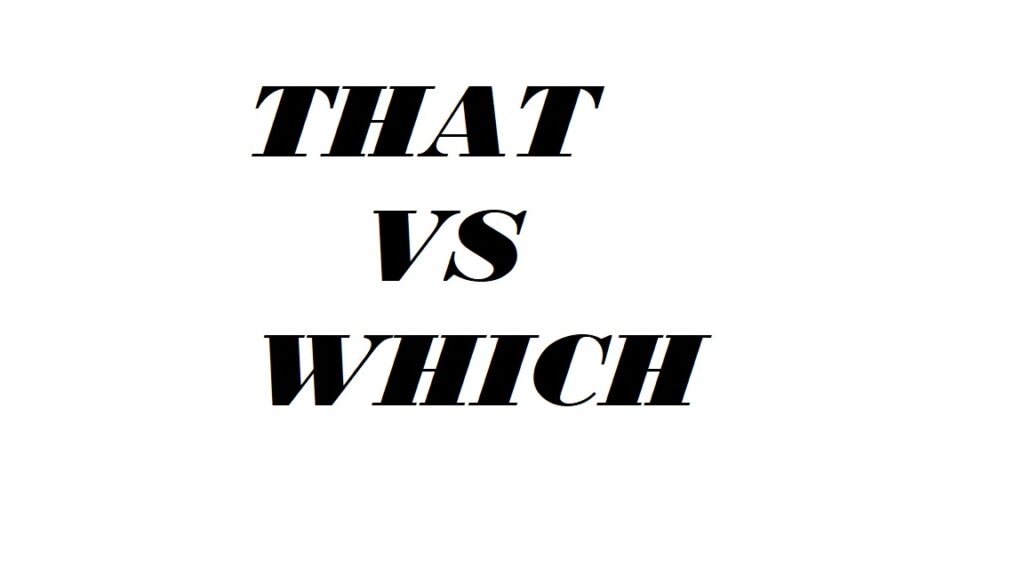That VS Which ACT, Digital SAT, EST
The difference between That and which is so intriguing for us , while we are on the test. Lets solve the mystery together.
“That” is used in restrictive clauses. These are essential to the meaning of the sentence, as they provide necessary information about the noun they are modifying. They are not set off by commas.
Example:
The book that is on the table is mine. (Here, “that is on the table” specifies which book is being referred to.)
“Which” is used in non-restrictive clauses. These provide additional information that is not essential to the meaning of the sentence. They are set off by commas.
Example:
My new laptop, which I bought last week, is very fast. (Here, “which I bought last week” gives additional information about the laptop but is not essential to identifying it.)
In British English, “which” is often used for both restrictive and non-restrictive clauses, whereas in American English, “which” is generally reserved for non-restrictive clauses, and “that” is used for restrictive clauses.
The usage of “that” and “which” in English can be quite nuanced
Here are some key differences between the two:
1. Restrictive vs. Non-Restrictive Clauses:
“That” is used for restrictive clauses. These clauses are essential to the meaning of the sentence and do not require commas. Example: The car that is parked in the driveway is red.
“Which” is used for non-restrictive clauses. These provide additional, non-essential information and are set off with commas. Example: My car, which is parked in the driveway, is red.
2. Prepositions:
“That” can be used after prepositions. Example: The house in which I grew up was sold.
“Which” is not typically used after prepositions. Example: The house that I grew up in was sold.
3. Pronouns:
“That” can be used for both people and things. Example: The person that called is my friend.
“Which” is typically used for things or non-human entities. Example: The book, which is on the shelf, is mine.
4. Informal vs. Formal Usage:
“That” is often preferred in informal writing and speech.
“Which” is more formal and is commonly used in written English.
5. British vs. American English:
In British English, “which” is often used for both restrictive and non-restrictive clauses.
In American English, “which” is usually reserved for non-restrictive clauses, and “that” is used for restrictive clauses.
6. Relative Pronouns:
“That” is a relative pronoun that introduces restrictive clauses.
“Which” is a relative pronoun that introduces non-restrictive clauses.
Understanding these distinctions can help you use “that” and “which” appropriately in your writing or speech.
Learn That
learn Relative pronoun
Find us on Facebook
That vs Which
Understand the difference between restrictive and non-restrictive clauses with this visual guide.
That (Restrictive)
Definition: Provides essential information to define the subject.
Example: The book that I borrowed was fascinating.
Essential Information
Which (Non-Restrictive)
Definition: Adds extra, non-essential information about the subject.
Example: The book, which I borrowed yesterday, was fascinating.
Additional Information
Note: Use commas with which, but not with that.

